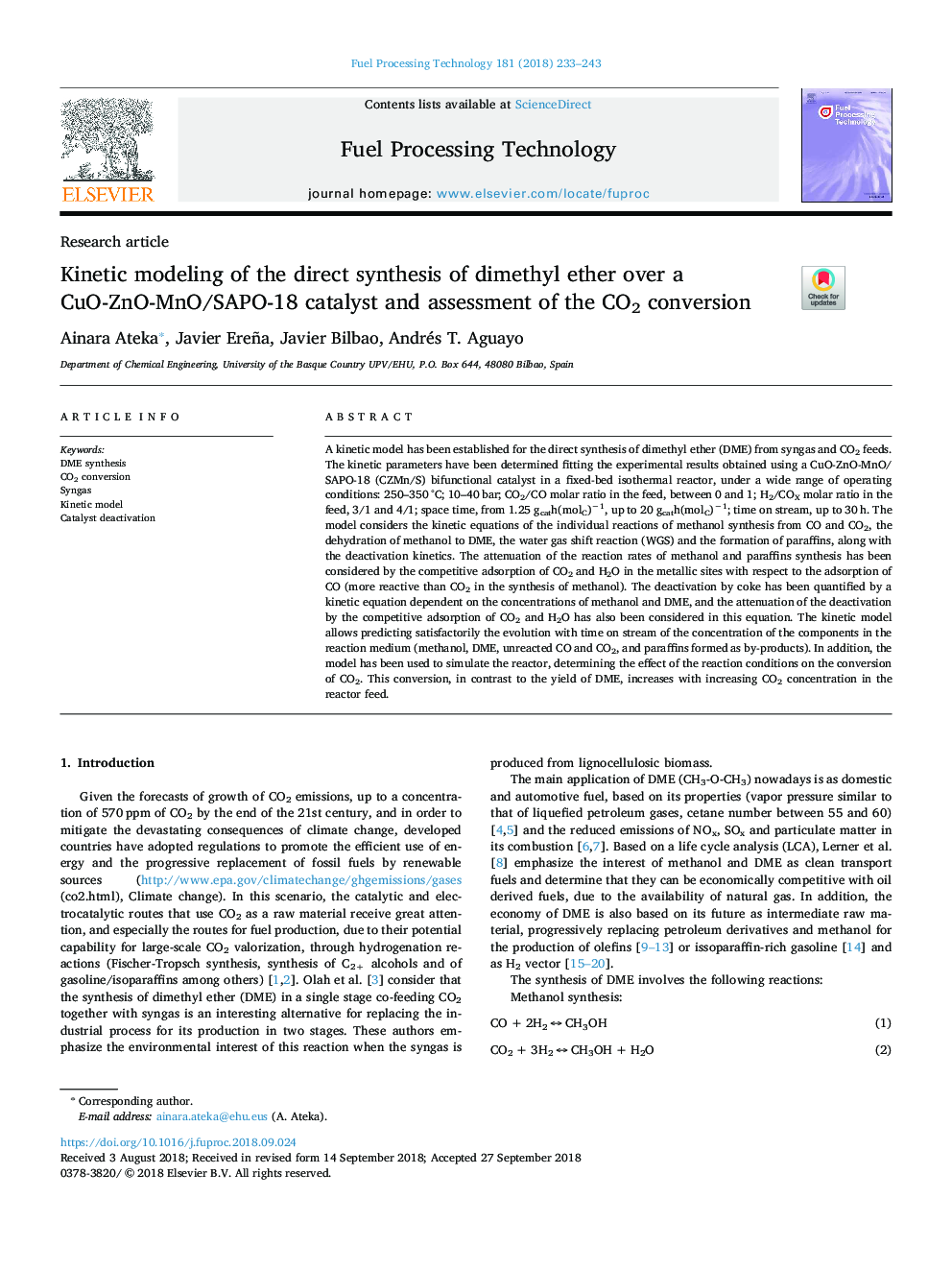| کد مقاله | کد نشریه | سال انتشار | مقاله انگلیسی | نسخه تمام متن |
|---|---|---|---|---|
| 11001547 | 461802 | 2018 | 11 صفحه PDF | دانلود رایگان |
عنوان انگلیسی مقاله ISI
Kinetic modeling of the direct synthesis of dimethyl ether over a CuOâZnOâMnO/SAPOâ18 catalyst and assessment of the CO2 conversion
دانلود مقاله + سفارش ترجمه
دانلود مقاله ISI انگلیسی
رایگان برای ایرانیان
کلمات کلیدی
موضوعات مرتبط
مهندسی و علوم پایه
مهندسی شیمی
مهندسی شیمی (عمومی)
پیش نمایش صفحه اول مقاله

چکیده انگلیسی
A kinetic model has been established for the direct synthesis of dimethyl ether (DME) from syngas and CO2 feeds. The kinetic parameters have been determined fitting the experimental results obtained using a CuOâZnOâMnO/SAPOâ18 (CZMn/S) bifunctional catalyst in a fixedâbed isothermal reactor, under a wide range of operating conditions: 250-350â¯Â°C; 10-40â¯bar; CO2/CO molar ratio in the feed, between 0 and 1; H2/COX molar ratio in the feed, 3/1 and 4/1; space time, from 1.25 gcath(molC)â1, up to 20 gcath(molC)â1; time on stream, up to 30â¯h. The model considers the kinetic equations of the individual reactions of methanol synthesis from CO and CO2, the dehydration of methanol to DME, the water gas shift reaction (WGS) and the formation of paraffins, along with the deactivation kinetics. The attenuation of the reaction rates of methanol and paraffins synthesis has been considered by the competitive adsorption of CO2 and H2O in the metallic sites with respect to the adsorption of CO (more reactive than CO2 in the synthesis of methanol). The deactivation by coke has been quantified by a kinetic equation dependent on the concentrations of methanol and DME, and the attenuation of the deactivation by the competitive adsorption of CO2 and H2O has also been considered in this equation. The kinetic model allows predicting satisfactorily the evolution with time on stream of the concentration of the components in the reaction medium (methanol, DME, unreacted CO and CO2, and paraffins formed as byâproducts). In addition, the model has been used to simulate the reactor, determining the effect of the reaction conditions on the conversion of CO2. This conversion, in contrast to the yield of DME, increases with increasing CO2 concentration in the reactor feed.
ناشر
Database: Elsevier - ScienceDirect (ساینس دایرکت)
Journal: Fuel Processing Technology - Volume 181, 1 December 2018, Pages 233-243
Journal: Fuel Processing Technology - Volume 181, 1 December 2018, Pages 233-243
نویسندگان
Ainara Ateka, Javier Ereña, Javier Bilbao, Andrés T. Aguayo,